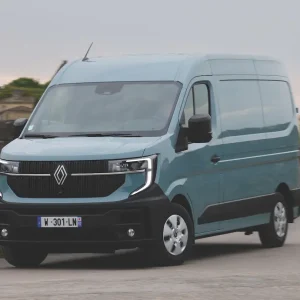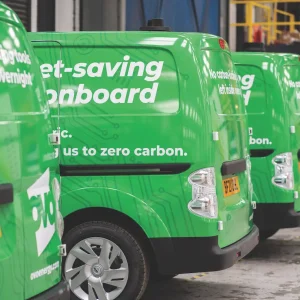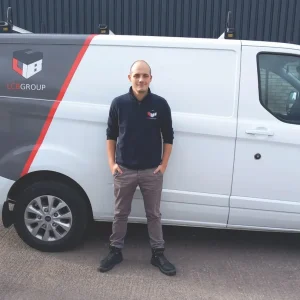When managing Mitie’s fleet, fleet manager Heidi Thompson puts People, Planet, Pocket, and Policies at the core of her decision making.
Mitie’s electric vehicle (EV) transition reduces its environmental impact, its safety features look after its people’s well-being, and its innovations look after the Mitie purse strings.
Mitie’s EV transition began in 2018, by March 2021 it had a 22% zero carbon fleet with 1,230 EVs. Due to Covid-19 and the subsequent supply shortage in vehicles, Thompson led on a project to work collaboratively to secure a guaranteed supply of electric vehicles. She successfully secured a monthly supply of 150 EVs until December 2022, which has been vital in working towards a target of a 45% zero carbon fleet by March 2023.
In 2022, Thompson introduced a further 1,133 EVs, saving 5,665t of emissions, making the fleet 38% zero carbon with 2,700 EVs, one of the largest electric fleets in the UK and 84% towards the company’s target.
With Mitie’s fleet responsible for a large proportion of its emissions, Thompson’s dedication and persistence will be key to achieving its target of net-zero operational emissions by 2025 and has significantly contributed to decreasing its emissions by a claimed 43% in the last year.
While Mitie’s overall target is for a 100% zero-carbon fleet the firm understands lack of available technology may present an obstacle. Thompson has therefore led on a collaborative project with vehicle manufacturers to contribute to design planning, ensuring that commercial fleet requirements, like Mitie’s, are future considerations, not only helping Mitie’s needs but those of the wider industry too.
To support colleagues with concerns over adopting electric vans, Thompson has run roadshows and over 2,000 home charge points have been installed. Thompson has also led a policy mandating that new offices have chargers in 50% of their parking bays.
Thompson has supported Mitie’s Quality, Health, Safety and Environment (QHSE) team through introducing training on safe manoeuvring, economic driving and vulnerable road users and has produced a drivers’ handbook focusing on environmental impacts and safe driving. She also sends an electronic safety bulletin to over 12,000 Mitie drivers, highlighting a different topic each month.
Using telematics data, Thompson oversees Mitie’s Driver Risk Management Framework, which analyses driver behaviour and instigates training where necessary.
Installing Autonomous Emergency Braking (AEB) in all fleet vehicles reduced motorway collisions by 50%, non-motorway by 90%, and roundabout rear-end collisions by 100%. A 13% incident saving was recorded overall.
Thompson supported a QHSE trial of Artificial Intelligence and Dashcams in a number of vehicles, which saw a 60% incident reduction. As a result, Mitie is introducing the equipment into all its commercial vehicles.
While driving the transition to EVs, Thompson also sits on a working group to ensure Mitie’s remaining ICE vehicles are operating as efficiently as possible. A priority is to utilise alternative fuels such as hydrotreated vegetable oil (HVO), a renewable diesel alternative. The hardest vehicles to transition to EV will be Mitie’s specialist fleet, due to the lack of technology currently available. Having an understanding of the cleaner fuels that are available will assist in reducing emissions until EV alternatives come on board.
Highly Commended: Chris Connors, Countryside Properties

House builder Countryside Properties has 70 vans on its fleet.
Head of facilities and fleet Chris Connors is overseeing a gradual transition to electrification. Over time he expects the fleet to evolve towards EVs and away from ICE because people want to do the right thing by choosing electric. He believes there will be a tipping point where Countryside offers only PHEVs or EVs to its drivers but he appreciates not everyone has access to chargers to make the best use of EVs and wants to make sure they only choose electric when it is viable.
For now, the focus is on driver training to set the drivers up for when they do make the switch to electric. All drivers complete a driver training course and risk assessment and the fleet has introduced an e-learning course for those making the switch to electric. The course explains the differences between having an EV and an ICE-powered vehicle to make sure drivers are not intimidated by the change.





